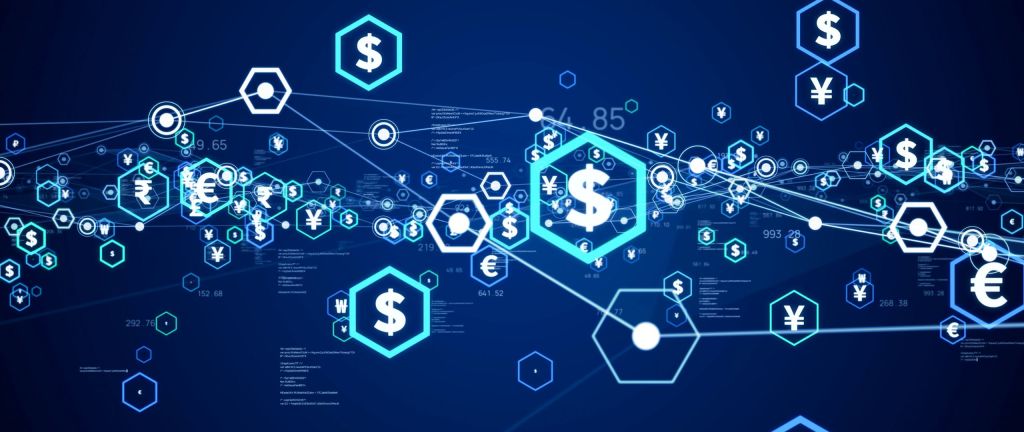Did you know that by 2025, we will be creating 463 exabytes of data, daily? (World Economic Forum) To put that into perspective, that would be 200 million DVDs worth of data, produced every 24 hours!
What exactly does this data include?
Everything you do online-from random clicks, likes, online shopping, subscriptions – creates data. This massive data explosion opens endless opportunities and challenges. The challenges businesses may face include data storage, data analysis, harnessing insights from large chunks of data, etc. This means there will be an increase in the need for future data analytics jobs.
What does this mean for you?
If you love cracking codes, making meaning out of numbers, and analysing them, continue reading to find out what the future of data analytics looks like! Singapore is one of the pioneers on the front lines in terms of Data Analytics and Big Data. This article will also highlight the benefits of pursuing a data analyst course in Singapore and the massive opportunities for career growth available there.
Why is Data Analytics so Important?
Numbers, patterns, statistics, predictions! That’s the world of data analytics.
The significant rise in data-driven decision-making in businesses and organisations fuels the data analytics job boom.
There were 14,093 data analyst jobs listed in January 2023. Similar roles such as data engineer (12,948 jobs) and data scientist (11,365 jobs) are also in demand (Source: Spiceworks).
Below are some of the reasons why data analytics is essential for the future:
- Decisions Based on Data, not Guesses
In business, guesswork never works. Data analytics is important for any business or organisation to enhance its operations, improve customer experiences, and identify opportunities for growth and innovation.
- Fuels Innovation Across Industries
Healthcare is one field that is currently undergoing a data-driven revolution. In the future, data analytics jobs will be extended to healthcare, helping in prevention of disease or illness.
On top of that, data analytics is widely used in trading, risk management, and fraud detection in finance. In marketing, it enables targeted advertising and customer segmentation.
- Artificial Intelligence and Machine Learning
You have likely seen the recent buzz surrounding AI tools such as ChatGPT, Bard, and Midjourney. Generative AI tools need a major chunk of data to learn and improve at creating text, images, and codes.
Data analytics is used for natural language processing, image recognition, automating vehicles, and human-computer interactions.
- Internet of Things (IoT) and Big Data
There is a huge increase in the network of interconnected devices, also called the Internet of Things (IoT), sensors, and systems that collect and exchange data. It could be your everyday objects like your refrigerators, light bulbs, more complex machines, and industrial equipment.
IoT typically collects data and uses this data to make decisions or automate processes. As a result, there is an unprecedented amount of data that needs to be harnessed.
- Personalisation and Customer Experience
The role of data analytics in understanding customer preferences and behaviour is rising. Using the data, brands can personalise products, services and marketing campaigns that result in improved customer satisfaction and loyalty.
- Smart Cities and Urban Planning
The future of data analytics jobs in urban planning is potentially exciting. Data analysis helps in building smart cities that are sustainable and liveable. It also helps in efficient urban planning and effective use of resources.
One prime example is Singapore, where a network of sensors monitors water pipes for leaks in real time, helping conserve water. (Source: NewScientist)
- Predicting Climate Change
Data analytics helps predict the weather, prepare for natural disasters, and understand climate change. One way it does this is by finding patterns in large amounts of data- an area where data analytics jobs look promising in the future.
- Creating Social Impact
Want to make a real difference in the world? A career in data analytics can be a great option.
Sound surprising? Data analytics is now widely used for understanding and tackling poverty, improving education outcomes, increasing healthcare access, and much more. Consider data analytics if you’re looking for a unique and impactful career.
To understand the core reason why data analytics is the future of everything, it is important to know some of the exciting trends and emerging technologies in data analytics.
What are some Data Analytics Future Trends to be Aware of?
If you are planning to opt for data analytics as a career option, well, the future is bright.
The world of data analytics is constantly evolving. The emergence of new trends and technologies is creating many job roles in data analytics.
Here are some of the most prominent data analytics future trends to watch out for.
- Artificial Intelligence (AI)
AI is playing an increasingly important role in data analytics. Techniques like machine learning and deep learning are automating tasks, uncovering hidden patterns, and improving the accuracy of predictions.
- Augmentation
This combines human expertise with automated analysis. A simple example is the chatbots. This type of analytics can be more helpful for non-technical users to get deeper insights into data. Think of it as providing AI-powered assistants to make sense of data.
- Blockchain
While still in its early stages, blockchain technology has the potential to revolutionise data security, particularly for sensitive data or collaborative analytics projects.
Is Data Analytics a Good Career?
Considering our current love affair with social media, smart devices, and everything online, there will be an overflow of data.
More data means more people to handle, organise, analyse, and display these data.
These key statistics will help you understand why data analytics is a good career.
- IBM reported that by 2024, there will be over 2.7 million jobs for data analysts and data scientists in the United States (US) alone. (Source: Forbes)
- The US Bureau of Labor Statistics revealed that the annual wage for data analysts was $131,490 in May 2022. (Source: U.S.Bureau of Labor Statistics)
- A Glassdoor survey found that the average base salary for data analysts in the USA is around $60,000-80,000 annually. The average salary for a machine learning engineer is mind-blowing $165,574 per year. (Source: Indeed)
What are the Requirements to Study Data Analytics?
Data analytics field constantly evolves. This means when you work in this area, you need to stay updated.
Given the competitive nature of the data analytics jobs, you need to acquire robust skill sets, such as:
- Proficiency in statistical analysis and data visualisation.
- Expertise in working with complex data sets.
- A deep understanding of AI and machine learning algorithms.
- Staying updated on cloud-based analytics platforms.
- Essential awareness about data privacy essentials and emerging data sources.
Besides, a strong foundation in mathematics, statistics, and computer programming is a plus.
If you want to gain these basic skills and work your way up, the London School of Business and Finance, Singapore Campus (LSBF) can be a good option.
That’s not all! Singapore is considered one of the prime technological hubs in Asia and can be the best place to start your career in data analytics.
Click here to learn more about Diploma courses in Data Analytics offered by the London School of Business and Finance in Singapore.
This article was written by Serin Thankam Sam and Edited by Taylor Gardner.
FAQs
- What are the 4 main types of data analytics?
- Descriptive Analytics
This is the base of data analysis. Focuses on summarising and describing past data to understand what happened. Tools like basic statistics, charts, and dashboards are commonly used here.
- Diagnostic analytics
This goes a little further, asking “why” things happened. Focuses on root causes of issues, trends, and correlations within historical data. Uses advanced statistical analysis, data mining, and anomaly detection.
- Predictive analytics
This uses past data and trends to predict future outcomes. It may be the most used category of data analytics. It is like predicting what might happen next that helps in informed decision-making. One example is weather forecasting. Uses machine learning algorithms, regressing analysis, and time series forecasting.
- Prescriptive analytics
This takes predictions, a step further. This type of analytics suggests the best course of action based on predicted outcomes. Involves advanced AI and optimization techniques.
- What are the emerging trends of big data analytics?
- AI and machine learning technologies– For automation, quality, and efficiency
- Edge computing – Analysing data closer to its source for faster insights.
- Cloud and hybrid computing– To process limitless amounts of data.
- Data lakes– A large repository (a giant store) of structured and unstructured data in its original format. Data scientists extract what is needed without any complexities.
- What are the data analytics trends in 2024?
- Some of the key data analytics trends to watch out for in 2024 are:
- User-friendly and accessible data for non-technical users like business analysts and marketing professionals.
- Integrating AI and ML to data analytics platforms.
- Metadata management to simplify data management and exploration.
- Edge computing to analyse data closer to its source for faster insights.
- Sustainable and responsible AI using more energy-efficient hardware, reducing carbon footprints.



